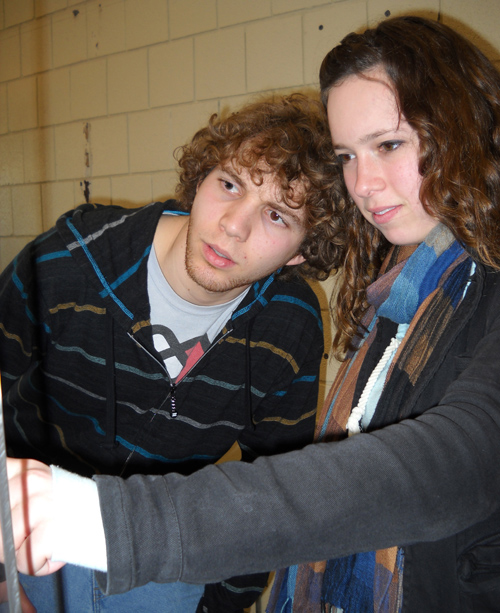
“We will not be levitating anyone today.” So says Chris Schultz-Nielsen – too bad for any adventurous souls among the undergrads eyeing the equipment in a physics teaching lab this afternoon.
Even if today’s superconducting experiment won’t lead straight to high-speed trains lifted by magnets, the lab instructor says this demonstration connects to real-world applications. Those include magnetic resonance imaging used in hospitals and semiconductors in computers.
Says Craig Flaherty, a third-year biophysics student in the class: “There’s a huge volume of applications for superconducting materials.”
As with other equipment in the lab, parts of this experimental setup were purchased using a new laboratory rejuvenation fund in the Department of Physics. The fund was established in 2010 with a $25,000 gift from the dean’s office in the College of Physical and Engineering Science.
Donations – notably from faculty, staff and alumni – have pushed the total to about $75,000. Prof. Eric Poisson, chair, says, “I was hoping for the best and got even more.”
That money will be used to buy modern equipment and supplies used by students making up one of the highest physics undergrad ratios among Canadian universities.
A national survey by a McMaster University colleague found Guelph has about 11 physics students per 1,000 undergrads overall, compared to the Canadian average of just over five students per 1,000. More than 500 U of G undergrads are enrolled in several programs, including theoretical physics, biophysics and nanoscience.
“We’ve always had a very large physics class here and that, I think, is a testament to our reputation,” says Poisson, pointing to Guelph’s research strengths including biophysics. “We’re very comprehensive in areas we cover research-wise, and the research we do informs the teaching.”
More students means more need for updated tools, says Schultz-Nielsen. “We have to cope with changing equipment. Physics is one of those subjects that bridge a strong theoretical background, and people have to know how to do experiments.”
People like Andrew Tan, a third-year physics student who’s interested in everything from string theory to space. He says today’s apparatus using liquid helium to plumb frigid temperatures needed for superconducting isn’t the only thing that’s cool.
“The fun thing about physics is you see real-world applications. You know you’re on the forefront of new technology. You learn the fundamental, basic building blocks behind it, and I feel that’s really cool.”
Schultz-Nielsen plans to use some of the funding to buy equipment and supplies for new hands-on experiments. He’d like to demonstrate more optics principles, for instance, but needs lenses and lasers for that. Speaking of grads’ career prospects, he says, “I want to create experiments that prepare them for the opportunities that await them.”
The funding will also help him maintain time-tested lab demonstrations connecting today’s students with original experimenters, including at least a couple of Nobel Prize-winning physicists.
That superconductivity experiment, for example, draws on work by Dutch physicist Heike Kamerlingh Onnes. The first scientist to liquefy helium, he won the physics Nobel Prize in 1913.
In another lab test, students use the Millikan oil drop experiment to figure out the size of an electron’s charge. The original experiment was done in 1909 by American physicists Robert Millikan and Harvey Fletcher, and led to a Nobel Prize for the former.
“It’s physics that is a century old, but it actually teaches students what it’s like to be a researcher,” says Schultz-Nielsen. “You’re going back 100 years to put yourself in the shoes of a famous scientist.”
There’s even a poignant element in one experiment. Here students measure X-rays to infer chemical elements in a sample, similar to methods used by environmental scientists to analyze soil and other materials.
The link between elements and their signature X-rays is covered by Moseley’s Law, named for British physicist Henry Moseley. He discovered the law when he was in his early 20s. A potential Nobel contender, he was killed at age 27 during the First World War.
Schultz-Nielsen completed his undergrad and master’s degrees here; he is now working on his PhD in soft matter physics.